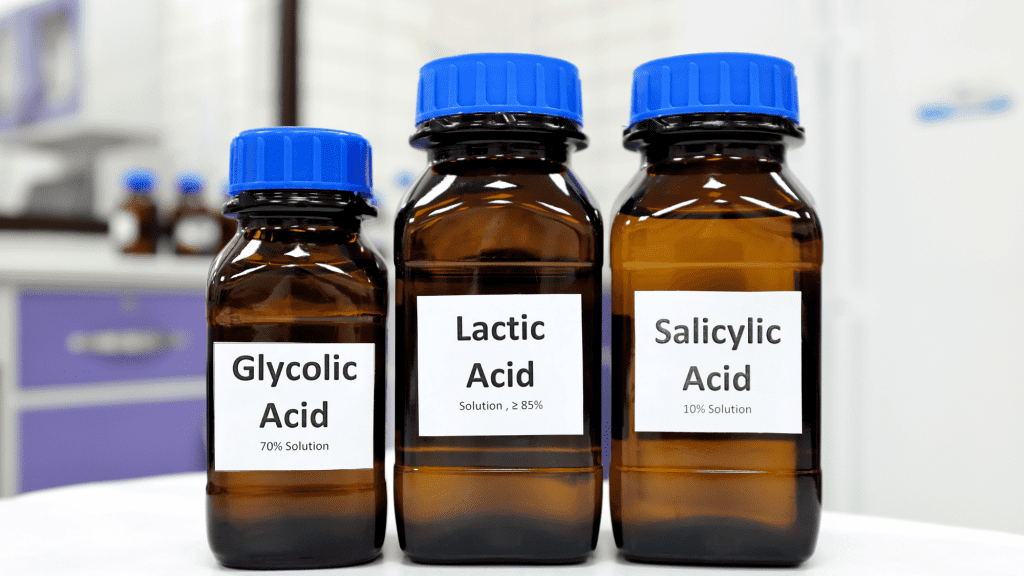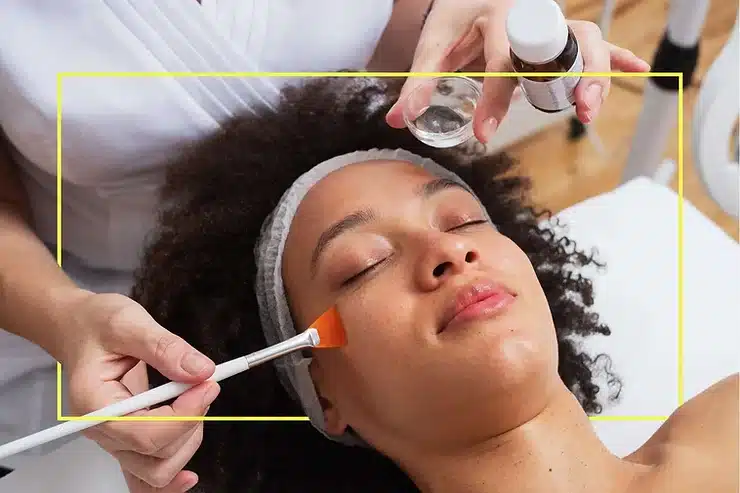By Andrea Popolizio
The biggest question I get asked as an esthetician: What is a chemical peel? In a nutshell: A chemical peel is a peel solution that works by removing the outer layers of the skin so that a new smooth layer of skin is revealed. Peels have a longer lasting effect for results, such as, texture improvement, tightening, a more even skin tone and an overall healthier appearance.
Chemical Peels Types:
There are different types of chemical peels from neutralizing to non-neutralizing and AHAs (alpha-hydroxy acids) to BHAs (beta-hydroxy acids). These peels work from the inside out and stimulate the production of fibroblasts which creates collagen to give an overall appearance of youthful, toned skin.
Alpha-hydroxy acids are glycolic and lactic. This acid dissolves desmosomes, the protein bridge that holds dead skin cells together. AHAs are stimulating and derived from fruit, sugar, sour milk and other natural food/plant-based sources. AHAs are a popular choice for acne scars, enlarged pores and skin imperfections; these can all be alleviated by using this type of acid. They remove dead skin cells and exfoliate the skin, allowing the healthy skin underneath to be exposed.
Beta-hydroxy acid is salicylic. Salicylic works by creating a shedding effect or exfoliation. BHAs are derived from the Willow Bark Tree. BHAs slightly differ in their molecule structure and rejuvenate the skin slightly differently as well. BHAs are known to help eliminate acne by penetrating thicker and deeper into the skin with no irritation. With an anti-inflammatory and antimicrobial effect, the chemical peel will minimize the pores and clear out follicular debris. This highly effective pore minimizer is both a natural peeling agent and pore cleanser that clarifies problematic skin. Salicylic Acid removes aging skin cells and oils attached to the skin’s surface, improving acne prone skin.
There are different levels of acids known as non-neutralizing and neutralizing formulas. Most acids’ natural state is between 2.0 – 2.5 and our skin’s natural pH level is between 4.5 – 5.5. Most companies will neutralize their acids to raise the pH level to our skin’s natural pH, this renders the natural acid and can cause the acid to be less effective or not effective at all. When a peel solution has a neutralized formulation which consists of a base with sodium or ammonium hydroxide to reduce causticity and raise the pH.

Neutralizing skin peels remain on the skin and are not removed. Instead, your skin absorbs them and leads to the peeling. Self-neutralizing chemical peels are typically layered peels. This means during application, your esthetician will apply layers of the peel solution and other beneficial products. Usually, these peels are medium depth peels. Therefore, they are best suited for those with specific skin concerns or experienced facial peel clients. One of the major advantages of self-neutralizing chemical peels is that they are highly customizable. If during the procedure your skin begins feeling too painful or tight, they can modify the procedure to your skin. Additionally, they can exchange, skip, or add layers based on your specific skin needs.
Non-neutralizing skin peels are removed from the skin with cool water or cool compresses to soothe the skin. By soothing the skin with the cool water or compresses, this helps alleviate any redness or frosting to occur and restore the skin back to its natural pH balance. Ultimately, this process reduces the effects of the acid solution on the skin. This peel is considered a light peel and the non-neutralizing peels are great for clients who want to try out a chemical peel without getting the full side effect of frosting or peeling. This peel is not customizable as the procedure is one layer of the solution then neutralizing it with the cool water and remaining products.
Now that we have covered the different types of peels and acids. The significance of chemical peels are: improving skin texture/ tone and lessening the appearance of fine wrinkles. If you have a medium chemical peel, treated skin will be noticeably smoother. After a deep chemical peel, you’ll see a dramatic improvement in the look and feel of treated areas. The results are subtle but increase with repeated treatments. Results may vary and not be permanent due to new sun exposure or other environmental or hormonal factors. A series (4 to 6 skincare treatments every 2 to 4 weeks) is recommended for most clients to see optimal results.
I hope this article has given you a deeper look or clarified any questions you may have had regarding chemical peels.
Thank you for taking this journey to learn about chemical peels and their differences/side effects!
Happy Peeling!
























